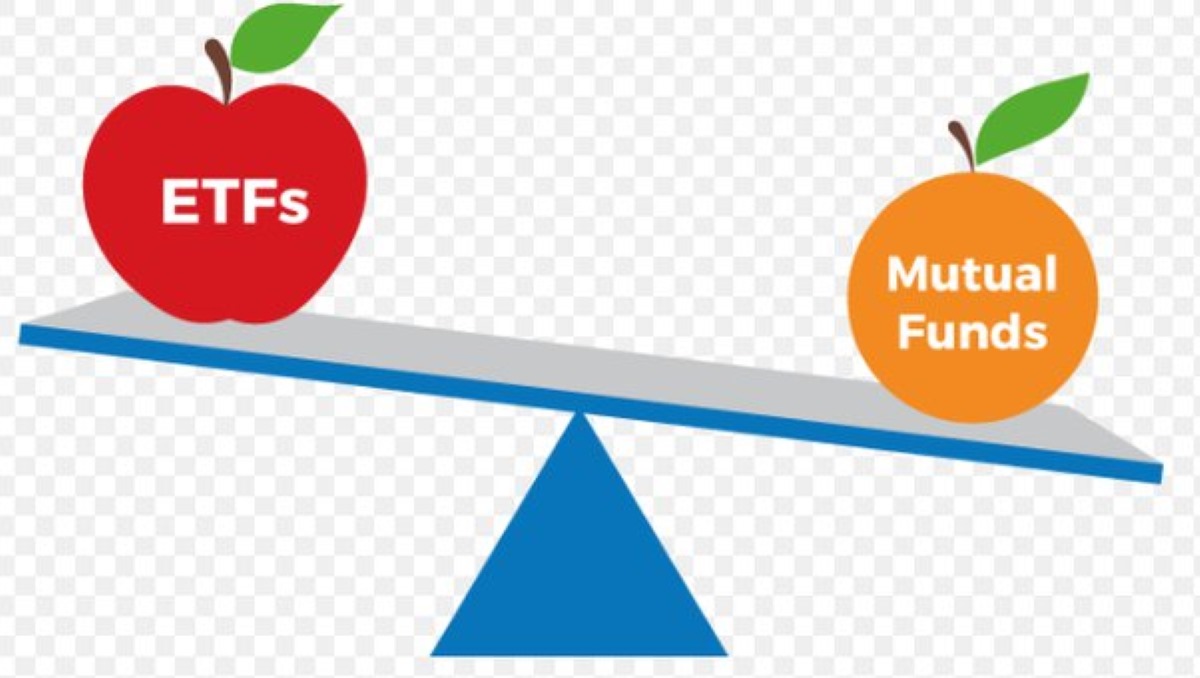

Finance
How Much Money Is In Pension Funds?
Published: January 23, 2024
Discover the significance of pension funds in finance and learn how much money is involved. Explore the impact on retirement planning and investment strategies.
(Many of the links in this article redirect to a specific reviewed product. Your purchase of these products through affiliate links helps to generate commission for LiveWell, at no extra cost. Learn more)
Table of Contents
Introduction
Understanding the Financial Power of Pension Funds
Pension funds play a pivotal role in shaping the financial landscape, representing a cornerstone of retirement security for millions of individuals worldwide. These funds serve as a vital source of income during retirement, providing a safety net for employees who have diligently contributed a portion of their earnings throughout their working years. Moreover, pension funds wield significant influence within the global financial markets, with their investment decisions impacting various industries and sectors.
As we delve into the intricate realm of pension funds, it becomes evident that their sheer magnitude and financial prowess warrant a closer examination. This article aims to unravel the complexities surrounding pension funds, shedding light on their colossal size, investment strategies, and the challenges they encounter. By gaining a comprehensive understanding of these financial behemoths, we can discern their profound impact on the economy and the future of retirement planning.
Pension funds are not only a testament to the commitment of employers in safeguarding the financial well-being of their workforce but also a driving force behind the growth and stability of financial markets. By delving into the depths of pension funds, we can unravel the intricate web of financial mechanisms that underpin retirement security and global investment strategies. Join me on this enlightening journey as we explore the vast world of pension funds and unravel the financial power they command.
Understanding Pension Funds
Pension funds, also known as superannuation funds in some regions, are investment pools that accumulate contributions from employees, employers, or both, with the primary objective of providing retirement benefits to employees. These funds are typically managed by financial institutions, pension funds administrators, or designated trustees, who oversee the investment and distribution of the accumulated funds in accordance with the fund’s investment strategy and regulatory guidelines.
One of the fundamental characteristics of pension funds is their long-term investment horizon, as they are designed to cater to the retirement needs of employees. This long-term perspective empowers pension funds to invest in a diverse range of assets, including stocks, bonds, real estate, and alternative investments, with the aim of achieving sustainable growth and generating returns that can fund future pension obligations.
Pension funds operate under a defined contribution or defined benefit structure. In a defined contribution plan, the eventual retirement benefit is based on the contributions made and the investment performance of the fund. Conversely, in a defined benefit plan, the retirement benefit is predetermined based on factors such as salary history and years of service. Understanding the nuances of these structures is crucial in comprehending the mechanics of pension funds and the implications for both employers and employees.
Furthermore, the regulatory framework governing pension funds varies across jurisdictions, encompassing stringent guidelines to safeguard the interests of pension fund members and ensure the prudent management of fund assets. These regulations often dictate the permissible investment instruments, risk management protocols, and reporting requirements, thereby instilling a sense of accountability and transparency in the management of pension funds.
As we unravel the intricacies of pension funds, it becomes apparent that these financial entities serve as custodians of retirement savings, embodying the trust and responsibility vested in them by both employers and employees. Their pivotal role in shaping the financial well-being of retirees and their influence on the broader investment landscape underscore the significance of understanding the inner workings of pension funds.
The Size of Pension Funds
The sheer magnitude of pension funds is a testament to their pivotal role in the global financial ecosystem. As of [latest year], the total value of pension funds worldwide surpassed [staggering amount], underscoring their substantial influence on capital markets and investment activities. This colossal figure encapsulates the combined assets held by pension funds, encompassing diverse investment portfolios that span equities, fixed income securities, real estate, and other alternative assets.
It is imperative to recognize that the size of pension funds varies significantly across different regions, reflecting the distinct retirement systems and demographic dynamics prevalent in each country. For instance, pension funds in [country] command a formidable presence, with their assets surpassing [amount], while [country] boasts a burgeoning pension fund industry characterized by robust growth and strategic diversification of assets.
Moreover, the size of pension funds is intrinsically linked to the demographic trends and retirement patterns within a given population. As the population ages and life expectancies increase, the assets under management by pension funds are poised to witness sustained growth, amplifying their impact on financial markets and investment opportunities. This underscores the evolving nature of pension funds and their enduring relevance in shaping retirement security and investment dynamics.
Furthermore, the size of pension funds exerts a profound influence on the allocation of capital across various asset classes and geographies. With their substantial financial resources, pension funds play a pivotal role in fostering economic development, funding infrastructure projects, and channeling investments into emerging markets, thereby contributing to sustainable growth and prosperity.
As we unravel the colossal size of pension funds, it becomes evident that their financial heft transcends mere numbers, encapsulating the aspirations and financial security of millions of individuals. The strategic deployment of these vast resources underscores the pivotal role of pension funds in shaping the global investment landscape and fostering long-term economic prosperity.
Investment Strategies of Pension Funds
The investment strategies employed by pension funds are underpinned by a meticulous balance between risk management, sustainable growth, and the fulfillment of long-term financial obligations. These strategies are crafted with a keen focus on diversification, asset allocation, and prudent risk management, aiming to optimize returns while mitigating potential downside risks.
Diversification lies at the core of pension fund investment strategies, as it enables the allocation of assets across a spectrum of investment classes, including equities, fixed income securities, real estate, infrastructure, and alternative investments. This strategic diversification not only mitigates the impact of market volatility but also enhances the potential for robust, risk-adjusted returns over the long term.
Asset allocation serves as a cornerstone of pension fund investment strategies, delineating the proportion of assets allocated to different investment categories based on their risk-return profiles. This strategic allocation is tailored to match the fund’s long-term liabilities, ensuring a prudent balance between growth-oriented and income-generating assets while factoring in the fund’s risk tolerance and liquidity requirements.
Furthermore, pension funds embrace a disciplined approach to risk management, encompassing rigorous assessments of market risks, credit risks, and liquidity risks inherent in their investment portfolios. This entails employing sophisticated risk modeling techniques, stress testing scenarios, and dynamic hedging strategies to safeguard the fund’s financial stability and resilience in the face of market turbulence.
Another pivotal aspect of pension fund investment strategies is the integration of environmental, social, and governance (ESG) considerations into their investment decision-making processes. Embracing sustainable and responsible investment practices not only aligns with the long-term interests of pension fund beneficiaries but also fosters positive societal and environmental impacts, thereby contributing to a more sustainable and ethical investment landscape.
As we delve into the intricacies of pension fund investment strategies, it becomes evident that these strategies are meticulously crafted to navigate the complex interplay of financial markets, regulatory dynamics, and evolving macroeconomic trends. By adhering to a disciplined and forward-looking approach, pension funds strive to optimize returns, mitigate risks, and fulfill their fiduciary responsibility to safeguard the retirement security of their beneficiaries.
Challenges Faced by Pension Funds
Despite their pivotal role in underpinning retirement security, pension funds encounter a myriad of challenges that necessitate astute management and strategic foresight. One of the primary challenges stems from the persistent low-interest-rate environment, which exerts pressure on the investment returns generated by fixed income securities, a traditional cornerstone of pension fund portfolios. This low-yield environment complicates the task of meeting long-term pension obligations, compelling pension funds to explore alternative investment avenues to bolster returns without unduly exposing the fund to excessive risk.
Moreover, demographic shifts, including aging populations and declining birth rates in several regions, pose significant challenges for pension funds. These demographic dynamics engender a higher dependency ratio, wherein a smaller working-age population is tasked with supporting a larger cohort of retirees. This demographic imbalance amplifies the financial strain on pension funds, compelling them to reassess their funding strategies, retirement age assumptions, and benefit structures to ensure the sustainability of pension provisions.
The evolving regulatory landscape presents another formidable challenge for pension funds, as stringent compliance requirements and reporting standards necessitate robust governance frameworks and operational transparency. Adhering to these regulatory mandates demands substantial administrative resources and operational agility, compelling pension funds to navigate a complex web of compliance obligations while upholding their fiduciary duties.
Furthermore, market volatility and geopolitical uncertainties introduce inherent complexities for pension funds, as they endeavor to navigate the ebbs and flows of financial markets while preserving the long-term value of their investment portfolios. Mitigating the impact of market turbulence and geopolitical risks necessitates a proactive and dynamic approach to risk management, encompassing hedging strategies, scenario analysis, and stress testing protocols.
Embracing technological advancements and digital transformation while safeguarding data privacy and cybersecurity also emerges as a pressing challenge for pension funds. The imperative to harness technological innovations to enhance operational efficiency and deliver seamless digital experiences to fund members must be balanced with robust cybersecurity measures to protect sensitive financial data and mitigate cyber threats.
As we assess the challenges faced by pension funds, it becomes evident that these financial entities must navigate a multifaceted landscape characterized by financial, demographic, regulatory, and technological complexities. By embracing strategic adaptability, prudent risk management, and innovative solutions, pension funds can surmount these challenges and uphold their commitment to securing the financial well-being of retirees.
Future of Pension Funds
The future trajectory of pension funds unfolds against the backdrop of evolving demographic dynamics, technological innovations, and transformative shifts in the global financial landscape. As populations continue to age and life expectancies rise, the sustainability of pension funds hinges on proactive measures to recalibrate retirement provisions, enhance funding mechanisms, and embrace innovative investment strategies.
One of the defining elements shaping the future of pension funds is the imperative to adapt to demographic shifts and evolving retirement patterns. Pension funds are tasked with reimagining retirement age assumptions, exploring flexible benefit structures, and fostering financial literacy among fund members to empower informed decision-making regarding retirement planning and fund utilization.
Furthermore, the integration of technology and digitalization stands as a pivotal force shaping the future of pension funds. Embracing advanced data analytics, artificial intelligence, and digital platforms enables pension funds to streamline administrative processes, deliver personalized member experiences, and optimize investment decision-making through enhanced insights and predictive modeling.
The sustainability and resilience of pension funds also hinge on their capacity to embrace sustainable and responsible investment practices. By integrating environmental, social, and governance (ESG) considerations into their investment strategies, pension funds can foster positive societal impact, mitigate long-term risks, and align their investment portfolios with the imperatives of sustainable development and ethical stewardship.
Moreover, the future of pension funds is intricately linked to the evolution of regulatory frameworks and governance standards. Pension funds are poised to navigate an increasingly complex regulatory landscape, characterized by heightened transparency requirements, stringent risk management mandates, and the imperative to uphold fiduciary duties while embracing technological advancements and digital security protocols.
The future of pension funds also unfolds within the realm of innovative retirement solutions, including the emergence of collective investment vehicles, tailored retirement income products, and enhanced portability of pension benefits. These innovative solutions seek to enhance the flexibility and accessibility of retirement provisions, catering to the diverse needs and preferences of an evolving workforce.
As we contemplate the future of pension funds, it becomes evident that their enduring relevance hinges on strategic adaptation, technological acumen, and a steadfast commitment to securing the financial well-being of retirees. By embracing proactive measures to address demographic shifts, harnessing technological innovations, and fostering sustainable investment practices, pension funds can navigate the complexities of the future and uphold their pivotal role in shaping retirement security and financial prosperity.














